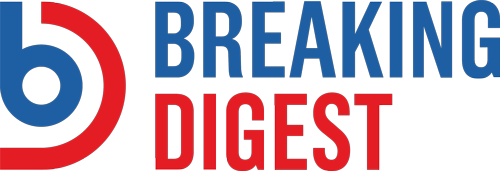
During a briefing with lawmakers on Thursday, officials from the Secret Service announced the conclusion of their investigation into the cocaine discovered at the White House. The investigation did not identify any suspects, which resulted in at least one congressman to leave the meeting in anger.
Congress summoned members of the Secret Service to testify regarding the discovery of a bag of cocaine in a secure area of the West Wing. They were tasked with explaining how, despite the presence of extensive security footage, no definitive identification of a suspect could be made.
Rep. Tim Burchett (R-TN), who stormed out of the meeting, told the New York Post that the conclusion reached by the agency is “bogus” and that “nobody’s buying that at all.”
“They have facial identification, they have — y’all know you can’t go in there without giving your Social Security number, and they decided it’s just some weekend visitor,” Burchett said. “That’s bogus. Nobody’s buying that at all.”
Following the meeting, Rep. Burchett accused the Biden White House of a cover-up in a video posted on Twitter.
Watch:
The investigation concluded with a lack of video or forensic evidence that could identify any suspects, as confirmed by Secret Service officials who told NBC News. No fingerprints or DNA were found to generate any leads. Consequently, we can draw one of two conclusions: either someone managed to bring illegal drugs into one of the most heavily guarded structures in the nation or it was a member of the Biden family.
Hunter Biden has a well-documented history of drug use, including cocaine. Images of him smoking crack cocaine have been circulated, including an instance in which he was hitting a crack pipe while driving 175 mph on route to Las Vegas.
Additionally, his past positive drug test results and dismissal from the Navy, and the fact that he visited the White House shortly before the discovery of the cocaine have only fueled the speculation.
Reports suggest that Hunter likely spends more time at the White House than Joe Biden does.
NBC News reported the latest update:
The small plastic baggie with a powdered substance — which was found in a storage cubby at the White House on a Sunday evening earlier this month — was subjected to advanced testing and examined at two federal labs but no usable fingerprints or DNA were detected, the officials said.
The Secret Service received results Wednesday from tests conducted by the FBI, “which did not develop latent fingerprints and insufficient DNA was present for investigative comparisons,” the Secret Service said in a statement Thursday. Security camera video was also reviewed, but “[t]here was no surveillance video footage that produced investigative leads,” the agency said.
Without that kind of physical evidence, the investigation has run out of road.
“The investigation will not be able to single out a person of interest from the hundreds of individuals who passed through the vestibule where the cocaine was discovered,” Secret Service officials conceded.
One source familiar with the investigation told NBC News that “the leading theory is that the substance belonged to one of hundreds of visitors who traveled through the building over the weekend.”
Rep. Marjorie Taylor Greene reacted by calling the investigation “a total failure”:
The Secret Service released the following statement:
On the evening of July 2, officers from the U.S. Secret Service Uniformed Division found an unknown substance inside a vestibule leading to the lobby area of the West Executive Avenue entrance to the White House.
The substance was located inside a receptacle used to temporarily store electronic and personal devices prior to entering the West Wing.
Following the discovery, safety closures were implemented around the White House. This response was designed to ensure that the found substance was not a chemical or radiological material that threatened the security of the White House. As such, the substance was field tested and preliminarily determined to not be a hazardous compound.
Testing conducted by the District of Columbia Fire and Emergency Medical Services Department indicated that the found powder tested preliminarily positive for the presence of cocaine. The substance and packaging were treated as evidence and sent to the U.S. Department of Homeland Security’s National Biodefense Analysis and Countermeasures Center, which analyzed the item for any biothreats. Tests conducted at this facility came back negative and gave formal confirmation that the substance was not biological in nature.
The substance and packaging underwent further forensic testing. The substance was analyzed for its chemical composition. The packaging was subjected to advanced fingerprint and DNA analysis. Both of these analyses were conducted by the Federal Bureau of Investigation’s crime laboratory given their expertise in this area and independence from the investigation.
While awaiting the FBl’s results, the Secret Service investigation into how this item entered the White House continued. The investigation included a methodical review of security systems and protocols. This review included a backwards examination that spanned several days prior to the discovery of the substance and developed an index of several hundred individuals who may have accessed the area where the substance was found. The focal point of these actions developed a pool of known persons for comparison of forensic evidence gleaned from the FBI’s analysis of the substance’s packaging.
On July 12, the Secret Service received the FBI’s laboratory results, which did not develop latent fingerprints and insufficient DNA was present for investigative comparisons. Therefore, the Secret Service is not able to compare evidence against the known pool of individuals. The FBl’s evaluation of the substance also confirmed that it was cocaine.
There was no surveillance video footage found that provided investigative leads or any other means for investigators to identify who may have deposited the found substance in this area. Without physical evidence, the investigation will not be able to single out a person of interest from the hundreds of individuals who passed through the vestibule where the cocaine was discovered. At this time, the Secret Service’s investigation is closed due to a lack of physical evidence.
The U.S. Secret Service takes its mission to protect U.S. leaders, facilities, and events seriously and we are constantly adapting to meet the needs of the current and future security environment.



